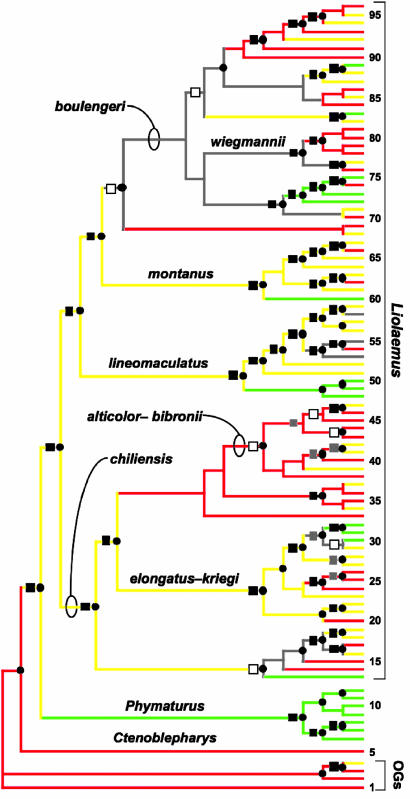Fig. 1.
Phylogeny of liolaemid lizards showing multiple origins of herbivory. The topology is based on a Bayesian analysis of combined morphological and DNA data. Circles at nodes indicate Bayesian posterior probabilities of ≥95%, and squares indicate concordant nonparametric bootstrap support (≥70%) from a parsimony analysis (black, 90–100%; gray, 80–89%; white, 70–79%). Colored branches indicate diet (red, insectivore; yellow, omnivore; green, herbivore; gray, equivocal). OGs, outgroups. Major species groups within Liolaemus (21–23, 36) are identified and numbered taxa are listed in Data Set 4, which is published as supporting information on the PNAS web site. Although diet reconstructions are ambiguous for some clades, almost all of this uncertainty is associated with transitions between insectivory and omnivory rather than the evolution of herbivory.

